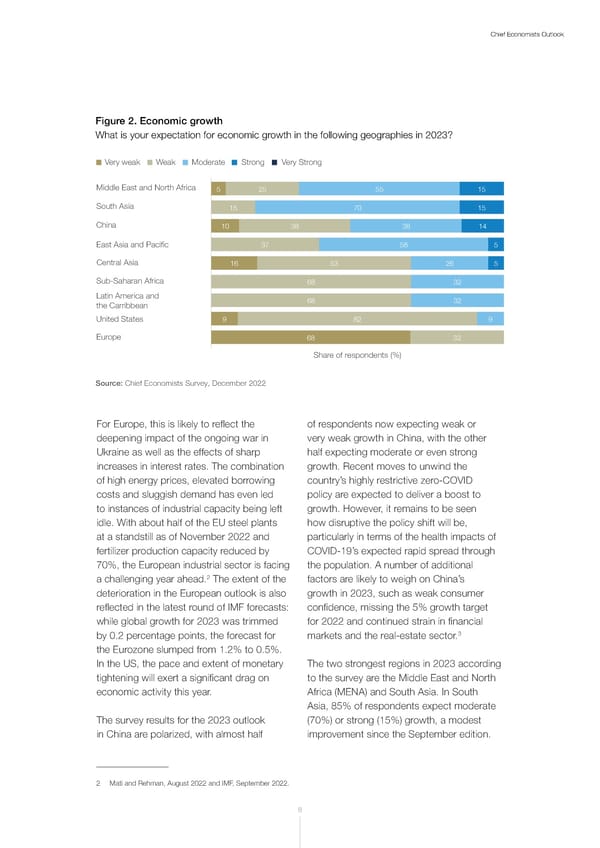8 Chief Economists Outlook For Europe, this is likely to reflect the deepening impact of the ongoing war in Ukraine as well as the effects of sharp increases in interest rates. The combination of high energy prices, elevated borrowing costs and sluggish demand has even led to instances of industrial capacity being left idle. With about half of the EU steel plants at a standstill as of November 2022 and fertilizer production capacity reduced by 70%, the European industrial sector is facing a challenging year ahead. 2 The extent of the deterioration in the European outlook is also reflected in the latest round of IMF forecasts: while global growth for 2023 was trimmed by 0.2 percentage points, the forecast for the Eurozone slumped from 1.2% to 0.5%. In the US, the pace and extent of monetary tightening will exert a significant drag on economic activity this year. The survey results for the 2023 outlook in China are polarized, with almost half of respondents now expecting weak or very weak growth in China, with the other half expecting moderate or even strong growth. Recent moves to unwind the country’s highly restrictive zero-COVID policy are expected to deliver a boost to growth. However, it remains to be seen how disruptive the policy shift will be, particularly in terms of the health impacts of COVID-19’s expected rapid spread through the population. A number of additional factors are likely to weigh on China’s growth in 2023, such as weak consumer confidence, missing the 5% growth target for 2022 and continued strain in financial markets and the real-estate sector. 3 The two strongest regions in 2023 according to the survey are the Middle East and North Africa (MENA) and South Asia. In South Asia, 85% of respondents expect moderate (70%) or strong (15%) growth, a modest improvement since the September edition. Figure 2. Economic growth What is your expectation for economic growth in the following geographies in 2023? Share of respondents (%) Very weak Weak Moderate Strong Very Strong Middle East and North Africa South Asia China East Asia and Pacific Central Asia Sub-Saharan Africa Latin America and the Carribbean Europe 5 15 10 37 16 68 32 68 32 53 26 5 58 5 38 38 14 70 15 25 55 15 9 82 9 68 32 United States 2 Mati and Rehman, August 2022 and IMF, September 2022. Source: Chief Economists Survey, December 2022
 WEF Chief Economists Outlook 2023 Page 7 Page 9
WEF Chief Economists Outlook 2023 Page 7 Page 9